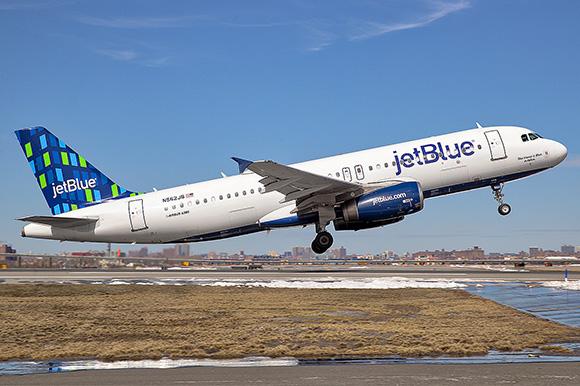
JetBlue CEO Robin Hayes is “cautiously optimistic” about a recent improvement in bookings trends for travel during the US Thanksgiving and Christmas holiday periods.
“We have seen signs of pent-up demand from customers who want to visit their family and friends or go on vacation, and we believe that we are extremely well-positioned to serve these customers as they return to air travel,” Hayes said during an earnings call with analysts and reporters.
Unlike earlier in the summer, when a surge in COVID-19 cases across the southern US sidelined the nascent rebound in domestic leisure travel, Hayes said the recent spike in cases has not yet had a material impact on travel demand. In a further sign of strength, the JetBlue CEO observed that the booking curve has elongated ahead of the holiday travel season—meaning customers are increasingly feeling comfortable booking trips further from their planned date of travel—although the curve remains compressed compared to its prepandemic shape.
To be sure, travel demand across JetBlue’s domestic and near-international network has been uneven, largely due to varying quarantine and business restrictions in different states and countries. Hayes described the impact of New York state’s 14-day quarantine on customer demand as “very, very significant,” although he observed that “compliance with quarantines has been mixed, at best.”
JetBlue’s top-performing routes in recent months have been to beach destinations in Florida, the Caribbean and Latin America. As such, the carrier has redeployed aircraft from the US Northeast to warm-weather leisure markets, including more than 60 new routes announced this summer featuring dozens of new transcontinental and leisure connections from its Newark (EWR) and Los Angeles (LAX) focus cities.
“As we've said since the onset of this pandemic, we do believe leisure and VFR [visiting friends and relatives] traffic will recover well before business travel rebounds,” JetBlue President Joanna Geraghty said. “VFR tends to be quite resilient in times like this, and we're seeing that absolutely play out.”
Management plans for scheduled capacity to decline by 45% year-over-year in the 2020 fourth quarter, marking a moderate improvement from down 58% in the third quarter. Load factors recovered to 50% by the end of September, boosted by tighter capacity and increased demand.
Photo credit: joepriesaviation.net
